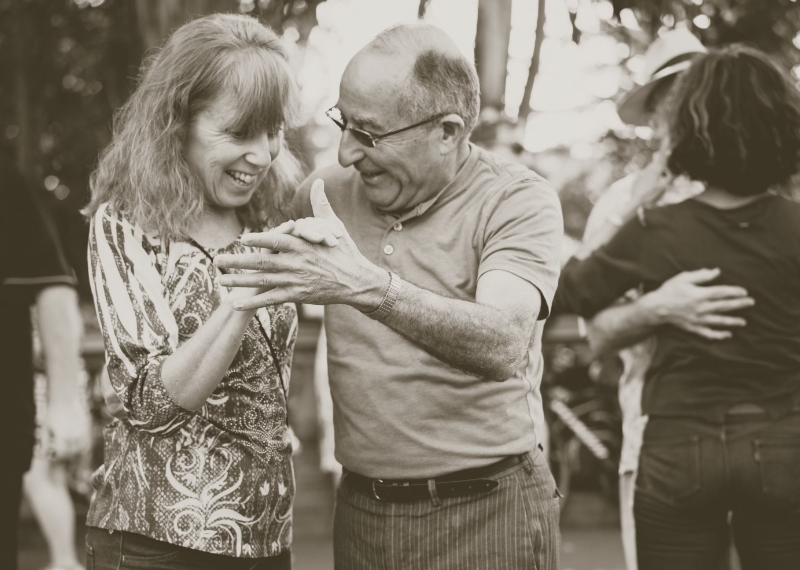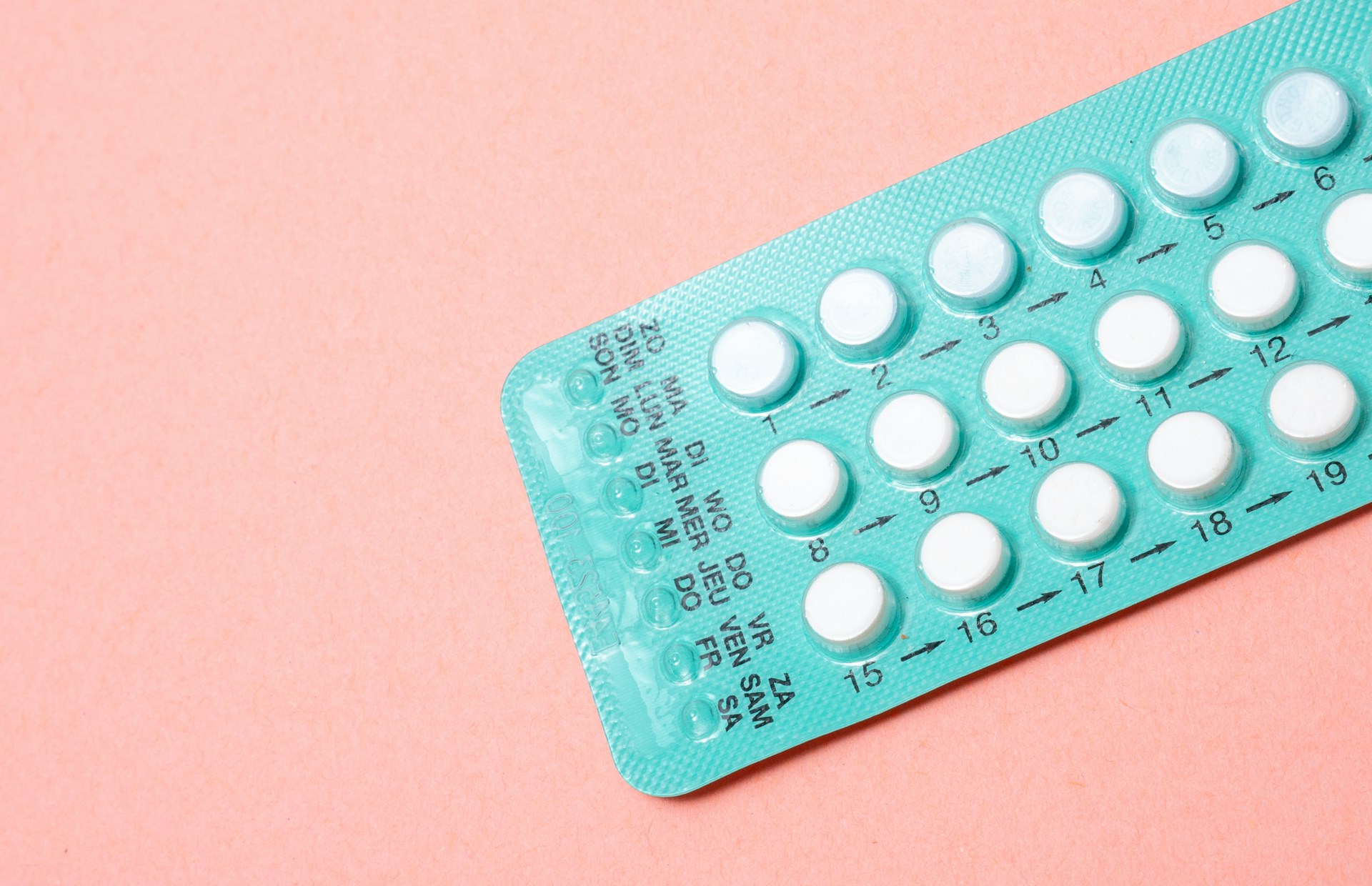Ageing is inevitable, but through mediums such as dance, the older generation may be kept healthier for longer. Photo credit: John Moeses Bauan via Unsplash
Thanks to advances in public health and medicine, people around the world are living longer. Over 2 billion people will be over the age of 60 by 2050, meaning that this age group will have doubled since 2015. But this increasing longevity and growing older population begs the question, how can we make the most of these extra years and live longer, healthier lives? Though factors like environment, social ties, genetics, and access to healthcare throughout life shape our disease risk as we age, there are still opportunities to improve mental and physical health through interventions in older age.
…dance interventions seem promising for bringing about both physical and cognitive benefits for healthy older adults and those with neurological conditions.
One such intervention for healthy ageing that is becoming more popular is dance. While the word “dance” might initially bring to mind small children donning sparkly tutus or ballet dancers who often retire before the age of 40, older adults are increasingly entering the studio and expanding the demographic that we think of as dancers. Combining the benefits of physical activity with the added layers of artistic expression, musicality, and socialising, dance interventions seem promising for bringing about both physical and cognitive benefits for healthy older adults and those with neurological conditions.
Remaining strong in order to avoid frailty and falls is especially important for older adults, and, like other forms of exercise, dance has been shown to bring about a range of improvements in physical fitness for older adults. These benefits include significant enhancements in mobility, such as better flexibility and endurance, as well as increased ability to sit and stand repeatedly. One study found that dance activities reduced the risk of participants over the age of 65 falling, with increases in lower body strength, balance, and mobility. An additional systematic review and meta-analysis of trials demonstrated that older adults who engage in a dance intervention showed an increase in peak oxygen consumption (VO2 peak) compared to groups of older adults who did not work out. This metric indicates that dance improves cardiovascular and respiratory system fitness. This study also indicated that the increase in VO2 peak was not significantly different from that of other types of exercise, meaning that dance was just as effective as other fitness programs for older adults. Therefore, current research highlights a variety of beneficial physical outcomes for older people participating in dance.
[the benefits of dance include] significant enhancements in mobility, such as better flexibility and endurance, as well as increased ability to sit and stand repeatedly
However, the positive outcomes of older adults engaging in dance extend beyond physical benefits like stronger muscles. Dance interventions have positive effects on older adults’ brains as well. While not all studies have shown changes in cognition or brain volume, others have demonstrated that dance impacts neuroplasticity (our brain’s ability to change and form new connections). Another six-month program comparing regular fitness training to dance showed that the dance group had increases in the volume of various brain regions, including the corpus callosum that connects the two hemispheres of the brain and the cingulate cortex which is involved in memory and other aspects of cognition. This study also found that dancing led to increases in levels of brain-derived neurotrophic factor (BDNF), a protein that helps neurons function. Dance has also been shown to improve white matter integrity in healthy people ages 60 to 80, though this seemed to be a similar extent as aerobic walking. This is a promising finding given that white matter decline is linked to worsening cognition and Alzheimer’s disease.
Dance can also have therapeutic applications for older adults with neurological and psychiatric conditions. For older adults with dementia, dance therapy has been shown to reduce symptoms of depression, ameliorate negative mood, and increase the ability to complete daily activities, among other beneficial outcomes. Older adults with Parkinson’s disease, a neurological disorder that affects movement, showed reduced disease severity, as measured by the Unified Parkinson’s Disease Rating Scale (UPDRS), as well as improved balance after participating in tango classes. These are promising findings, and further studies are needed to evaluate whether dance therapy could be beneficial for additional geriatric patient populations, such as those with psychiatric conditions.
Dance can also have therapeutic applications for older adults with neurological and psychiatric conditions.
In addition to how movement can be incorporated to help with some health challenges that older adults may face, dance can also be used to help counteract social isolation. Loneliness is detrimental for older people, and has even been noted to be equivalent to smoking 15 cigarettes each day, so interventions are needed to address this problem. In interviews with individuals between the ages of 71 and 87 who went to weekly dance classes in Canada, the participants reported feeling less stressed and more confident. The older dancers also noted the health benefits, subjective memory improvements, and a feeling of community with the other dancers. In another qualitative study of older women in Korea, the dancers noted that they felt that this activity improved their sense of health and happiness. An additional review of quantitative studies of the biopsychosocial effects of dance therapy for older adults reported improvements in quality of life and in motivation to engage in further social behaviours with friends and family. Thus, dance has a promising role to play in enhancing social connections for older adults.
Various steps need to be taken to ensure that older people can engage in dance and benefit from its physical and mental health effects. Given the wide variety of dance styles and the varying levels of physical fitness within the heterogeneous population of older adults, further work is needed to ensure that dance programs can be tailored to the diverse physical capabilities of this demographic. Many systematic reviews and meta-analyses note the need for more rigorous studies of dance for older adults with larger sample sizes. Additionally, dance intervention programs need to be made more accessible for older adults who are interested, including those living independently, in residential homes, and those who may be homebound. Innovative approaches, such as a dance video game designed for people over the age of 65 that can be adapted to the user’s abilities, could help make this form of artistic exercise more easily accessible to the growing geriatric population. Finally, in addition to figuring out the logistics of dance programs for older individuals, the dance community needs to work to counteract ageism and ableism in order to ensure that this age group feels comfortable and valued.
Designing communities that promote healthy ageing will require creative solutions, and dance appears to be a promising tool. This form of artistic movement has the potential to provide a multitude of benefits, from the physical to the psychosocial, and this opportunity should be made accessible to older adults. Tendus, tango, and tap dancing could be just what we need to keep older people happy and healthy for as long as possible.





